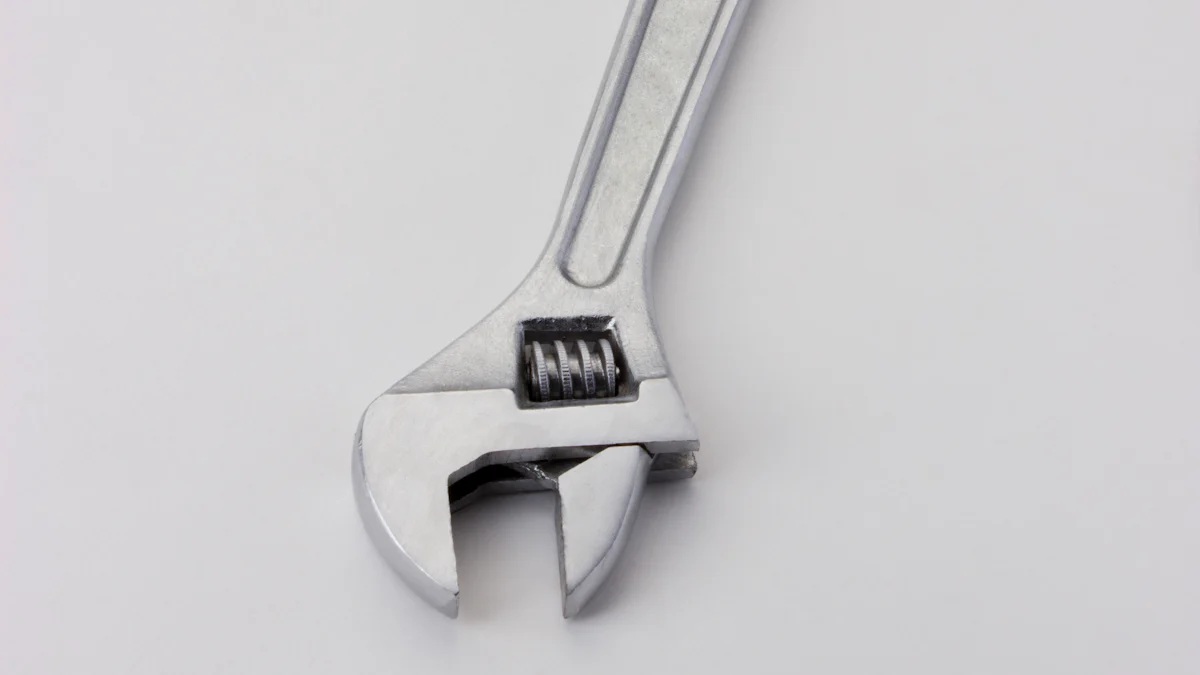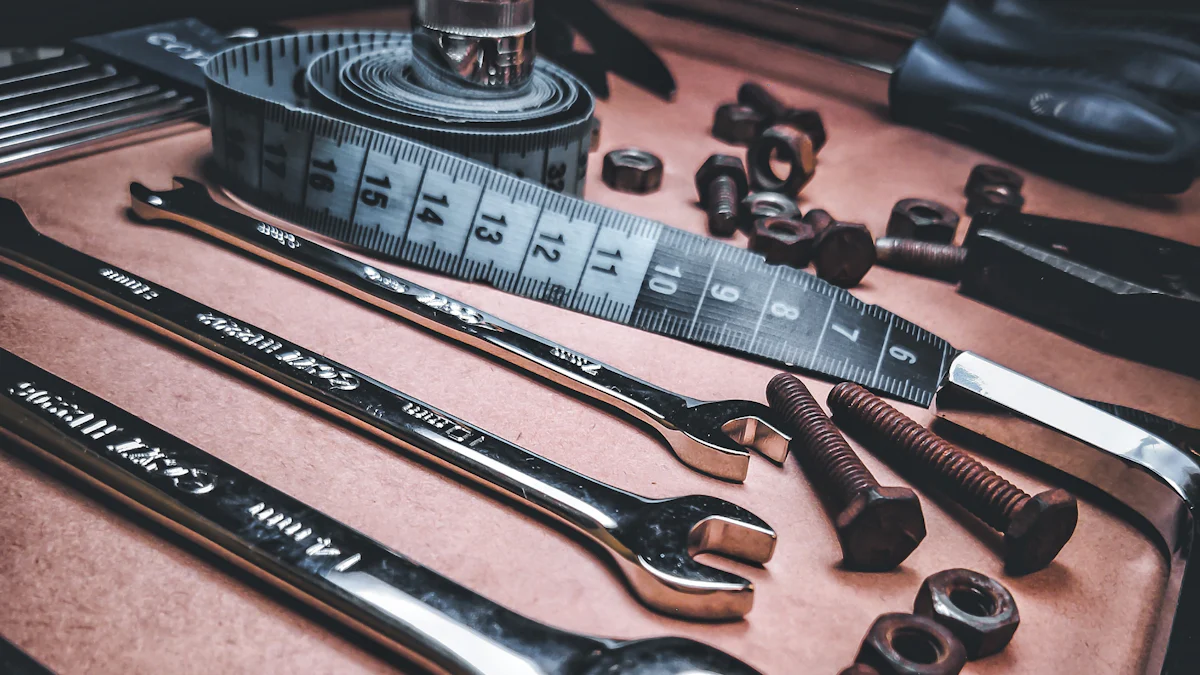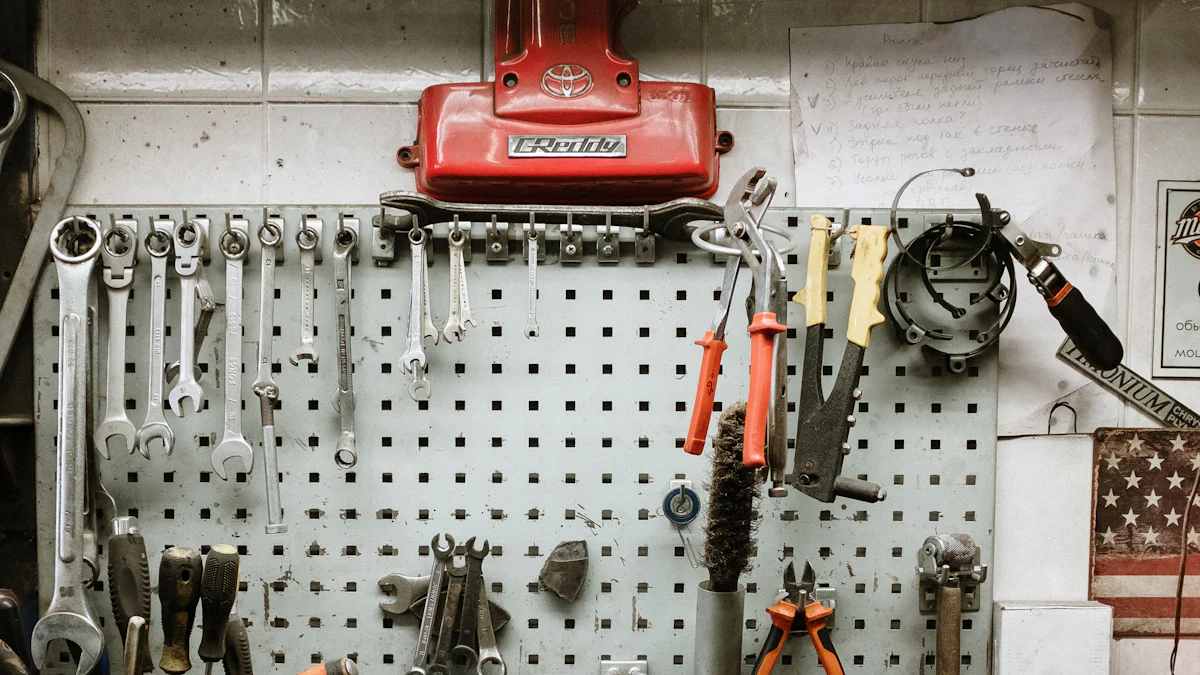
Many people often confuse spanners and wrenches. Understanding the differences between these tools is crucial for selecting the right tool for any job. Spanners and wrenches play pivotal roles in various industries, including automotive repair, construction, and manufacturing. Knowing what a spanner is and how it differs from a wrench enhances efficiency in tackling mechanical tasks. Proper tool selection based on core functions and needs ensures successful project outcomes.
Definitions and Basic Differences
What is a Spanner?
Definition and Origin
A spanner is a hand tool designed to provide grip and mechanical advantage in applying torque to turn objects, usually rotary fasteners like nuts and bolts. The term “spanner” originates from British English, where it serves as the generic word for tools that tighten or loosen screw heads or nuts. In American English, the term “wrench” is more commonly used for similar tools.
Common Types of Spanners
Spanners come in various types, each suited for specific tasks. Some common types include:
- Open-End Spanner: Features U-shaped openings at both ends, allowing it to grip two different sizes of nuts or bolts.
- Ring Spanner: Has a closed-loop (ring) at both ends, providing a more secure grip on nuts and bolts.
- Combination Spanner: Combines an open-end and a ring end in one tool, offering versatility.
- Adjustable Spanner: Also known as an adjustable wrench, this type has a movable jaw to fit various sizes of fasteners.
- Socket Spanner: Uses interchangeable sockets to fit different sizes of nuts and bolts, often used with a ratchet handle.
What is a Wrench?
Definition and Origin
A wrench is a tool used to provide grip and mechanical advantage in applying torque to turn objects, typically nuts and bolts. In American English, “wrench” serves as the generic term for these tools. The term “spanner” is less commonly used in the United States but is prevalent in British English.
Common Types of Wrenches
Wrenches also come in various types, each designed for specific applications. Some common types include:
- Adjustable Wrench: Features a movable lower jaw, allowing it to adjust to different sizes of nuts and bolts.
- Pipe Wrench: Designed to grip and turn pipes and pipe fittings, often used in plumbing.
- Torque Wrench: Measures and applies a specific amount of torque to a fastener, ensuring proper tightness.
- Allen Wrench: Also known as a hex key, this L-shaped tool fits into hexagonal socket screws.
- Combination Wrench: Similar to the combination spanner, it features an open-end and a box-end, providing versatility.
Usage and Applications

When to Use a Spanner
Specific Scenarios and Examples
Spanners excel in various tasks due to their fixed sizes and precision. In automotive repair, mechanics often use spanners to tighten or loosen nuts and bolts on engines and other components. Industrial machinery maintenance also benefits from spanners, especially when dealing with specific fasteners that require precise torque. DIY enthusiasts frequently use spanners for home plumbing projects, such as tightening pipe fittings.
Advantages of Using a Spanner
Spanners offer several advantages. The fixed size of each spanner ensures a perfect fit for the corresponding nut or bolt, reducing the risk of slipping and damaging the fastener. This precision makes spanners ideal for tasks requiring exact torque application. The simplicity of spanners also means fewer moving parts, leading to increased durability and lower maintenance needs. Additionally, the variety of spanner types, such as open-end, ring, and combination spanners, provides versatility for different tasks.
When to Use a Wrench
Specific Scenarios and Examples
Wrenches are indispensable in many scenarios due to their adjustable nature. In plumbing, pipe wrenches grip and turn pipes and fittings, making them essential for installing or repairing plumbing systems. Automotive repairs often require adjustable wrenches to handle various sizes of nuts and bolts in tight spaces. Torque wrenches are crucial in applications where precise torque measurement is necessary, such as assembling machinery or securing critical components in vehicles.
Advantages of Using a Wrench
Wrenches provide several benefits. The adjustable jaw of an adjustable wrench allows it to fit multiple sizes of fasteners, offering flexibility in various tasks. This adaptability reduces the need for carrying multiple tools, saving space and weight in toolkits. Pipe wrenches, with their serrated jaws, provide a strong grip on round objects like pipes, ensuring efficient turning without slippage. Torque wrenches ensure accurate torque application, preventing over-tightening or under-tightening, which can lead to component failure.
Historical and Geographical Perspectives
Historical Development of Spanners and Wrenches
Evolution Over Time
The history of spanners and wrenches dates back to the 15th century. Early tools served as practical levers for turning nuts and bolts. By the 19th century, significant innovations emerged. The development of adjustable coach wrenches addressed the need for tools that could handle odd-sized nuts. In 1825, wrench innovations led to the creation of standard sizes for fasteners and spanners.
The early 19th century also saw the introduction of wrenches with screw adjustments. Influential designs appeared in 1842 and 1843, revolutionizing the tool industry. Industrial settings began using specialized spanner wrenches, tailored for specific needs.
Key Innovations
Key innovations in spanners and wrenches include the development of adjustable jaws and the standardization of sizes. The introduction of the adjustable wrench allowed for greater versatility. This innovation reduced the need for multiple fixed-size tools. The creation of torque wrenches ensured precise torque application, preventing over-tightening or under-tightening.
Geographical Differences in Terminology
Usage in the United States
In the United States, the term “wrench” serves as the generic term for tools that turn nuts and bolts. Americans use “wrench” to describe both adjustable and fixed-size tools. The term “spanner” is less common in American English. However, some specialized tools retain the name “spanner,” such as the spanner wrench used in plumbing.
Usage in the United Kingdom and Other Regions
In the United Kingdom, “spanner” is the standard term for tools that tighten or loosen nuts and bolts. British English distinguishes between spanners and wrenches. Spanners typically refer to fixed-size tools, while wrenches often denote adjustable tools. This distinction extends to other regions, including Australia, New Zealand, and Ireland. These areas follow the British terminology, using “spanner” for most hand tools designed for rotary fasteners.
Choosing the Right Tool
Factors to Consider
Type of Task
Selecting the right tool depends on the type of task. Spanners work well for tasks requiring precision. Mechanics often use spanners in automotive repairs. Fixed-size spanners ensure a secure fit on nuts and bolts. Wrenches, especially adjustable ones, suit tasks needing flexibility. Plumbing jobs benefit from the adjustable nature of wrenches. Knowing what a spanner can do helps in choosing the correct tool.
Material and Build Quality
The material and build quality of tools matter. High-quality steel ensures durability. Chrome vanadium steel offers strength and resistance to corrosion. Tools with ergonomic handles provide comfort during use. Checking the build quality helps in making an informed decision. Understanding what a spanner is made of can guide the selection process.
Practical Tips for Selection
Expert Recommendations
Experts recommend considering the specific needs of the job. For precision tasks, fixed-size spanners are ideal. Adjustable wrenches offer versatility for various fasteners. Investing in high-quality tools pays off in the long run. Mechanics and DIY enthusiasts should keep a range of spanners and wrenches. Knowing what a spanner can achieve aids in selecting the right tool.
Common Mistakes to Avoid
Avoid using the wrong tool for the job. Using an adjustable wrench when a fixed-size spanner is needed can cause damage. Over-tightening with a wrench can lead to stripped bolts. Not considering the material of the tool can result in premature wear. Understanding what a spanner is designed for prevents common mistakes. Proper tool selection ensures successful project outcomes.
Maintenance and Care

Proper Maintenance Techniques
Cleaning and Storage
Proper cleaning of tools ensures longevity and efficiency. After each use, clean spanners and wrenches thoroughly to remove dirt and debris. Use a brush or cloth to wipe off any grime. For stubborn residues, a mild detergent can help. Dry the tools completely before storage to prevent rusting. Store spanners and wrenches in a dry, cool place. A toolbox or a pegboard works well for organized storage.
Regular Inspections
Regular inspections are crucial for maintaining tool integrity. Check spanners and wrenches for signs of wear and tear. Look for worn-out jaws, damaged handles, or rust spots. Inspect adjustable wrenches for smooth jaw movement. Replace any damaged parts promptly to avoid accidents. Regular inspections help identify issues early, ensuring tools remain reliable and safe.
Extending the Lifespan of Your Tools
Preventive Measures
Preventive measures can significantly extend the lifespan of spanners and wrenches. Use tools only for their intended purposes. Avoid using excessive force, which can damage the tool. Apply a light coat of oil to metal surfaces to prevent rust. Store tools properly to avoid exposure to moisture. Following these preventive measures keeps tools in good condition.
Repair and Replacement Tips
Knowing when to repair or replace tools is essential. Minor damages, like small rust spots or loose handles, can be repaired. Use rust removers or lubricants for minor fixes. For severe damages, such as cracked handles or deformed jaws, replacement is necessary. Investing in high-quality tools reduces the need for frequent replacements. Regular maintenance and timely repairs ensure tools perform optimally.
Understanding the key differences between spanners and wrenches enhances tool selection. Spanners offer precision with fixed sizes, while wrenches provide versatility with adjustable jaws. Choosing the right tool depends on the task’s requirements and the tool’s build quality. Applying this knowledge in practical scenarios ensures better outcomes. For example, a spanner wrench proved invaluable in a DIY plumbing project, making various fittings manageable. Readers are encouraged to share their experiences and questions to foster a community of learning and improvement.
See Also
Discovering the Range of Socks for Males and Females
Top Tips for Warm Winter with Soft Cozy Socks
